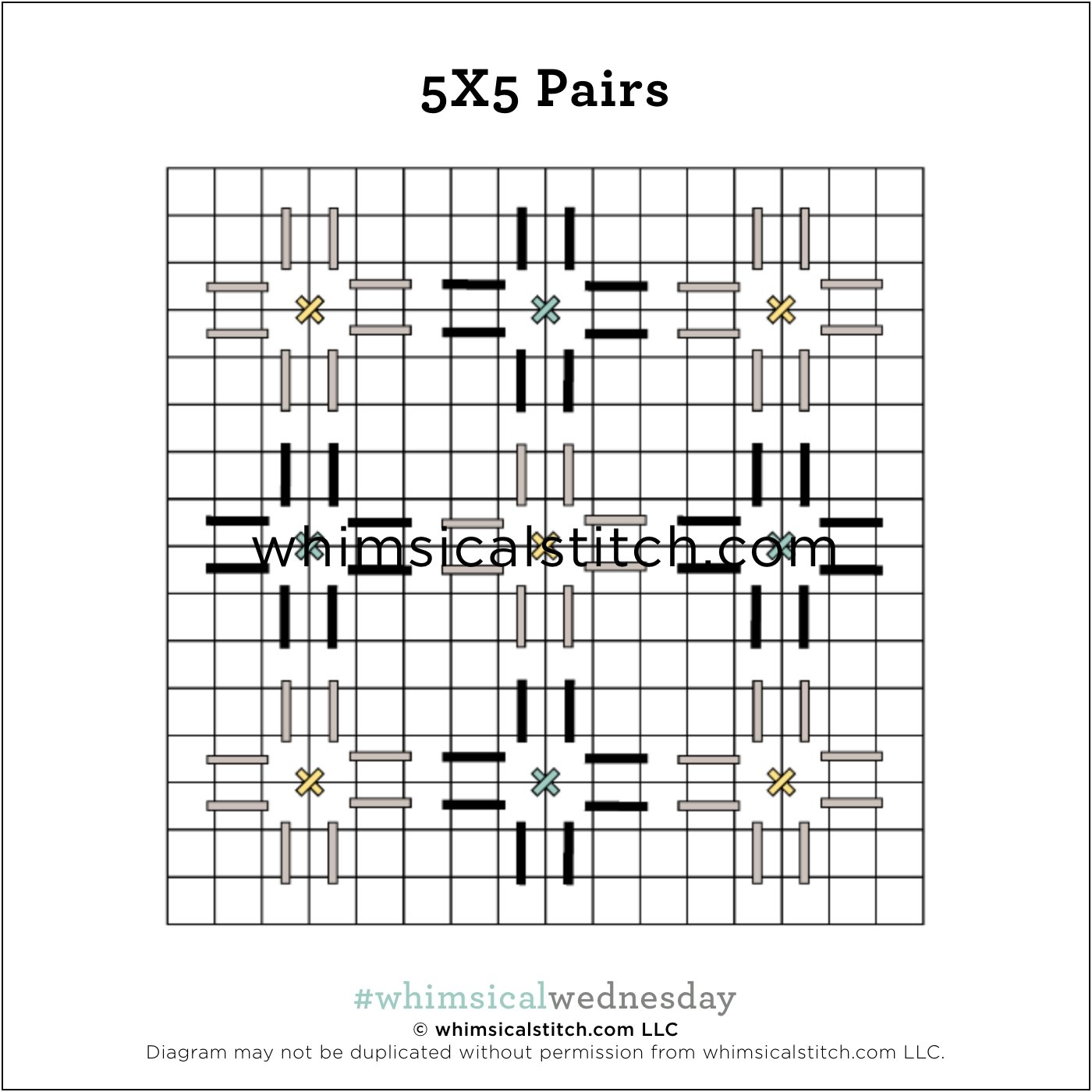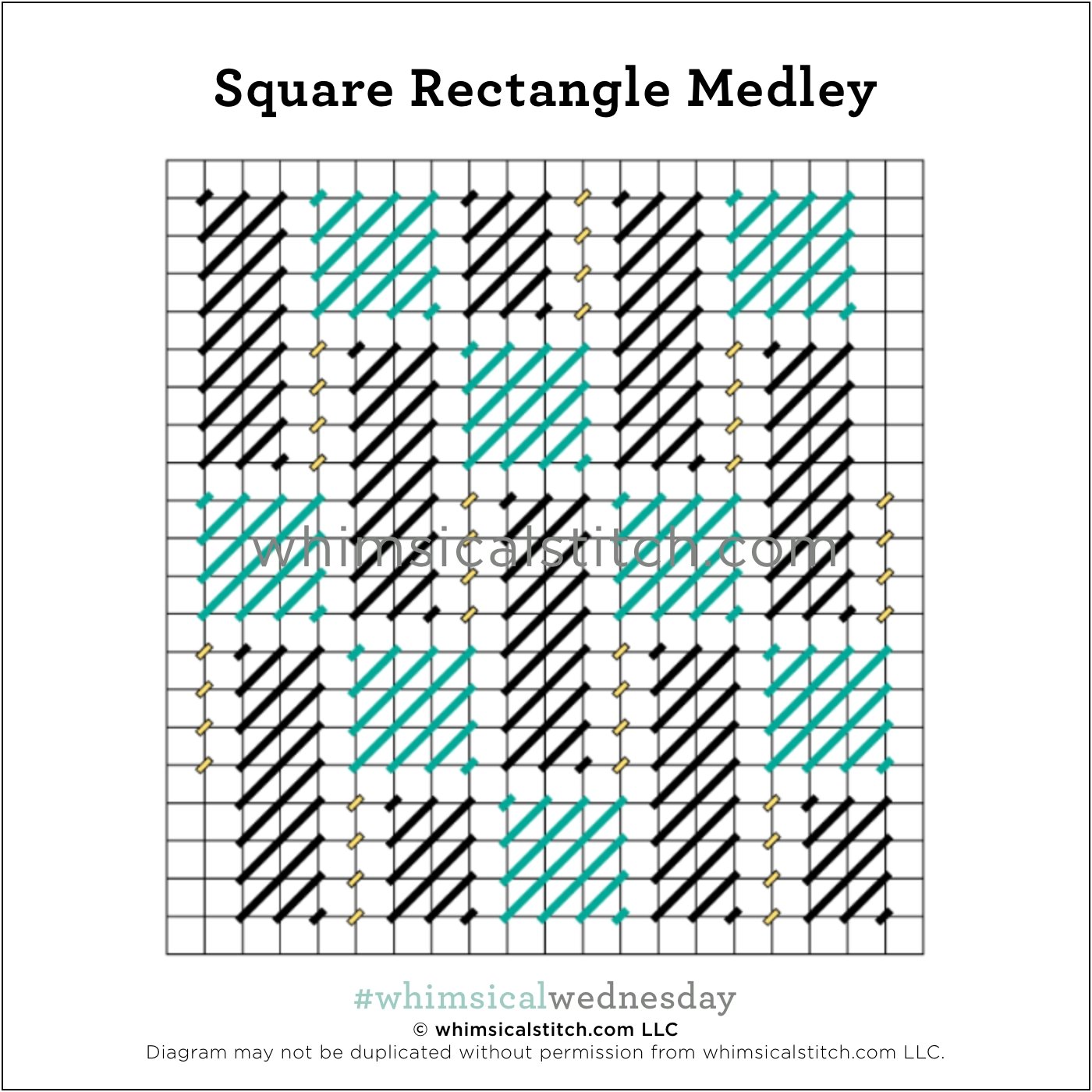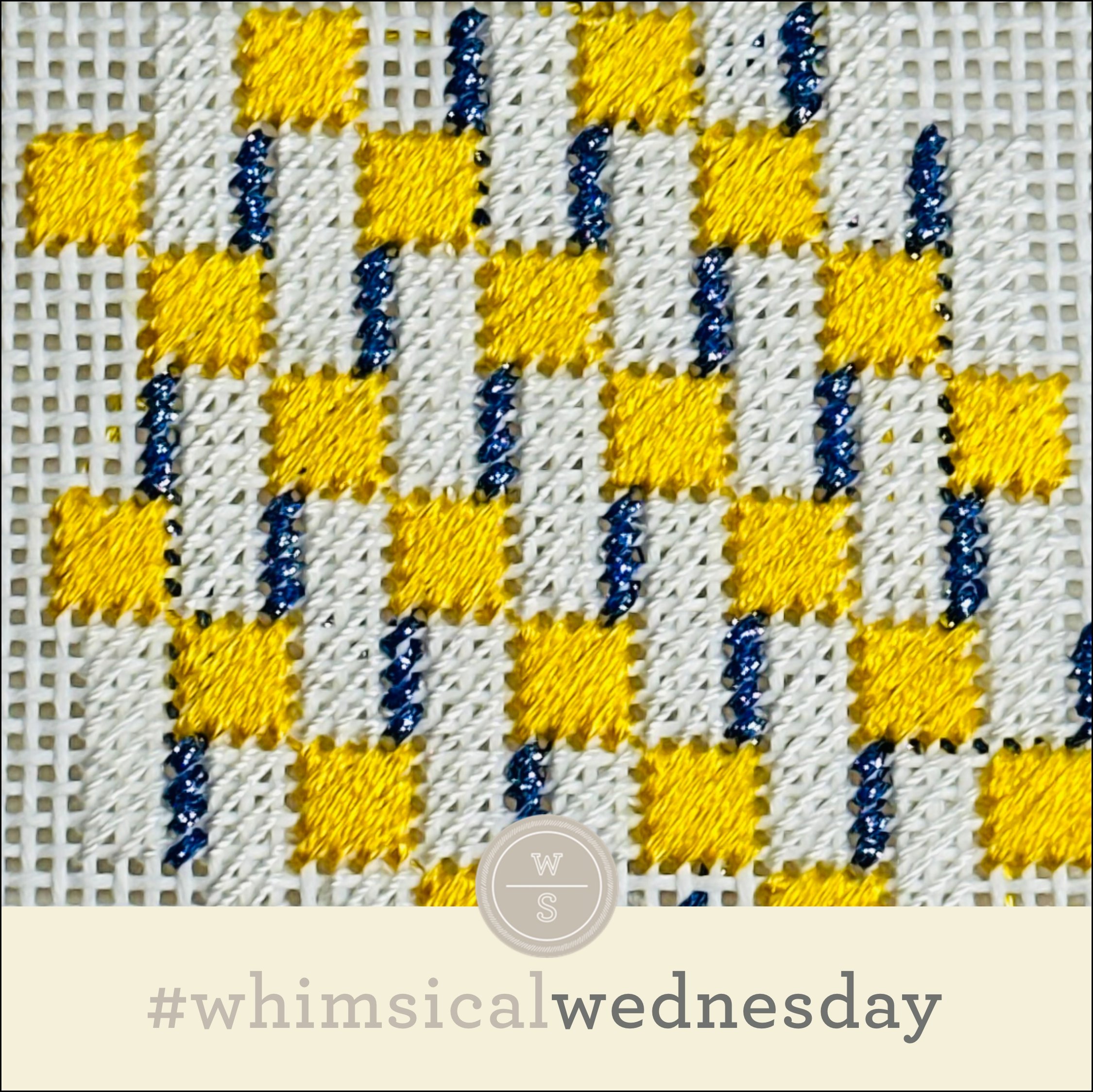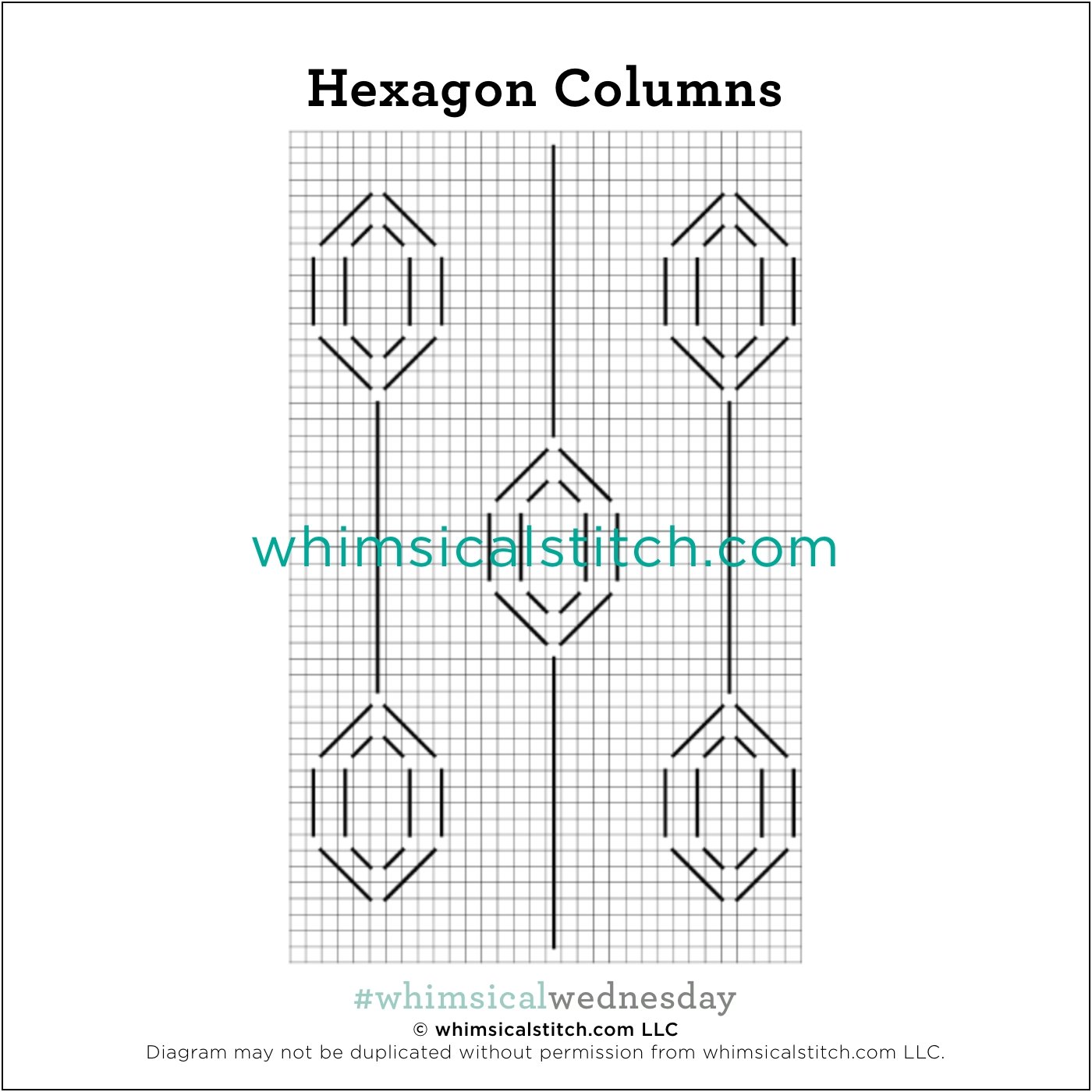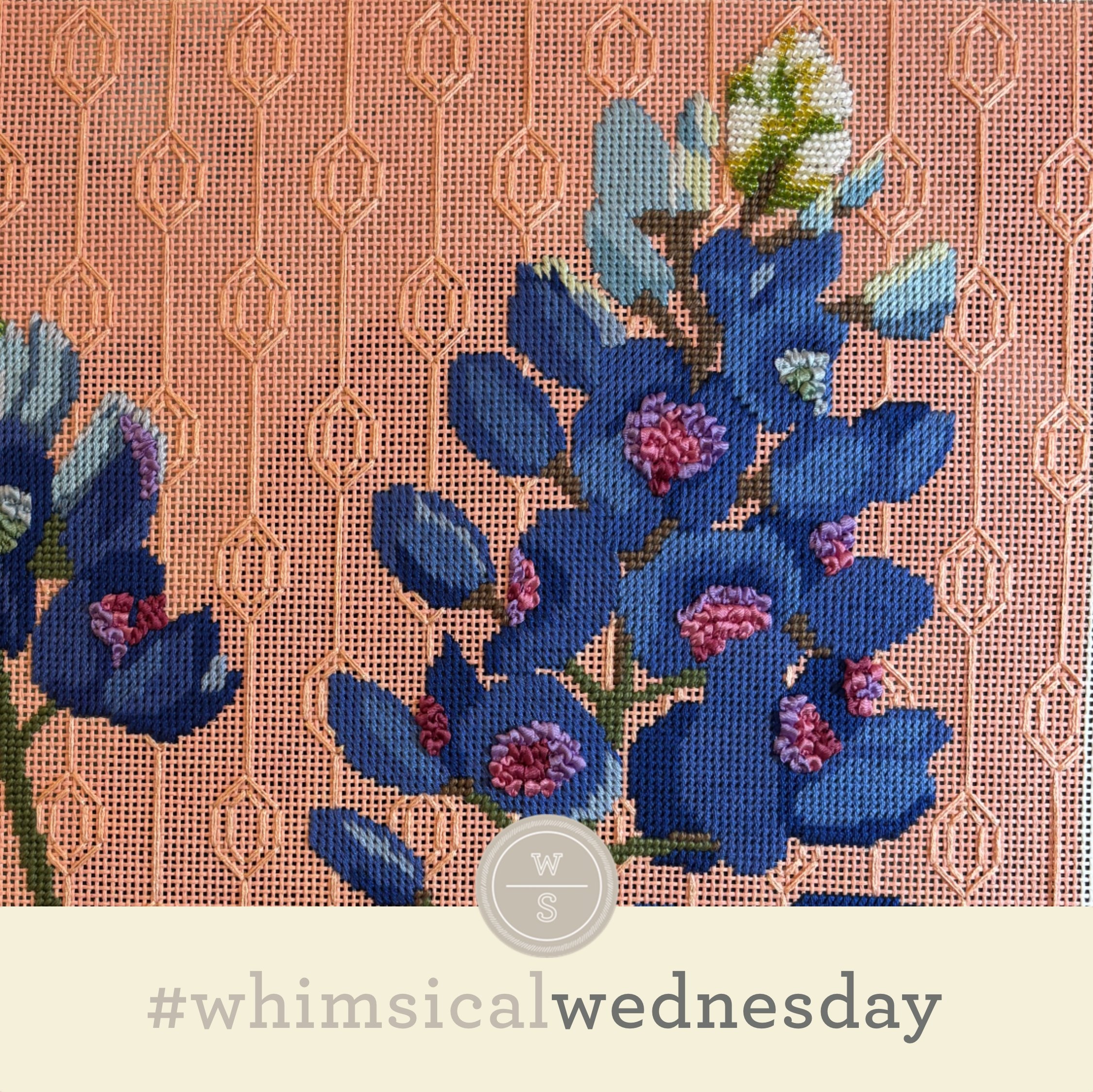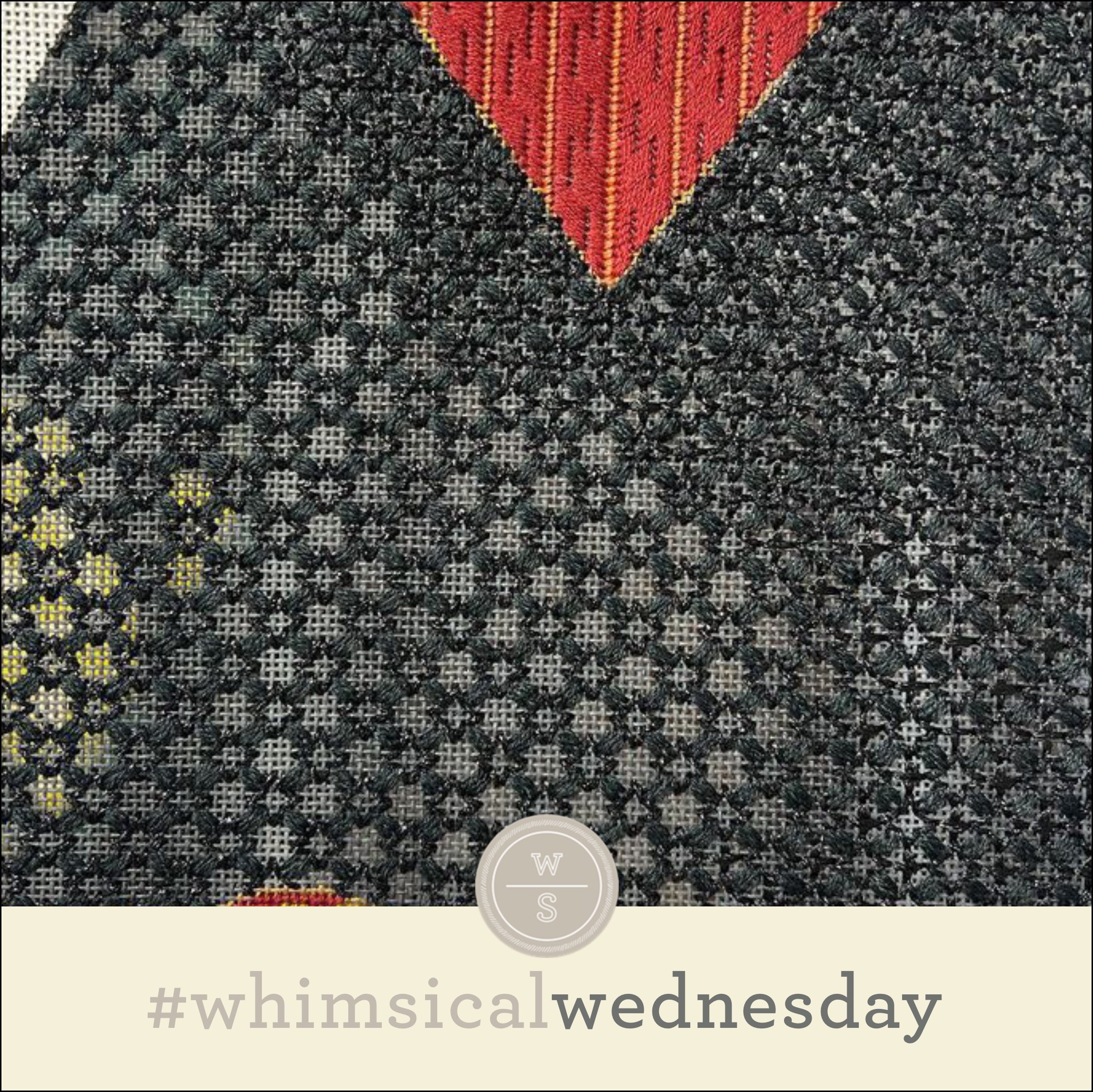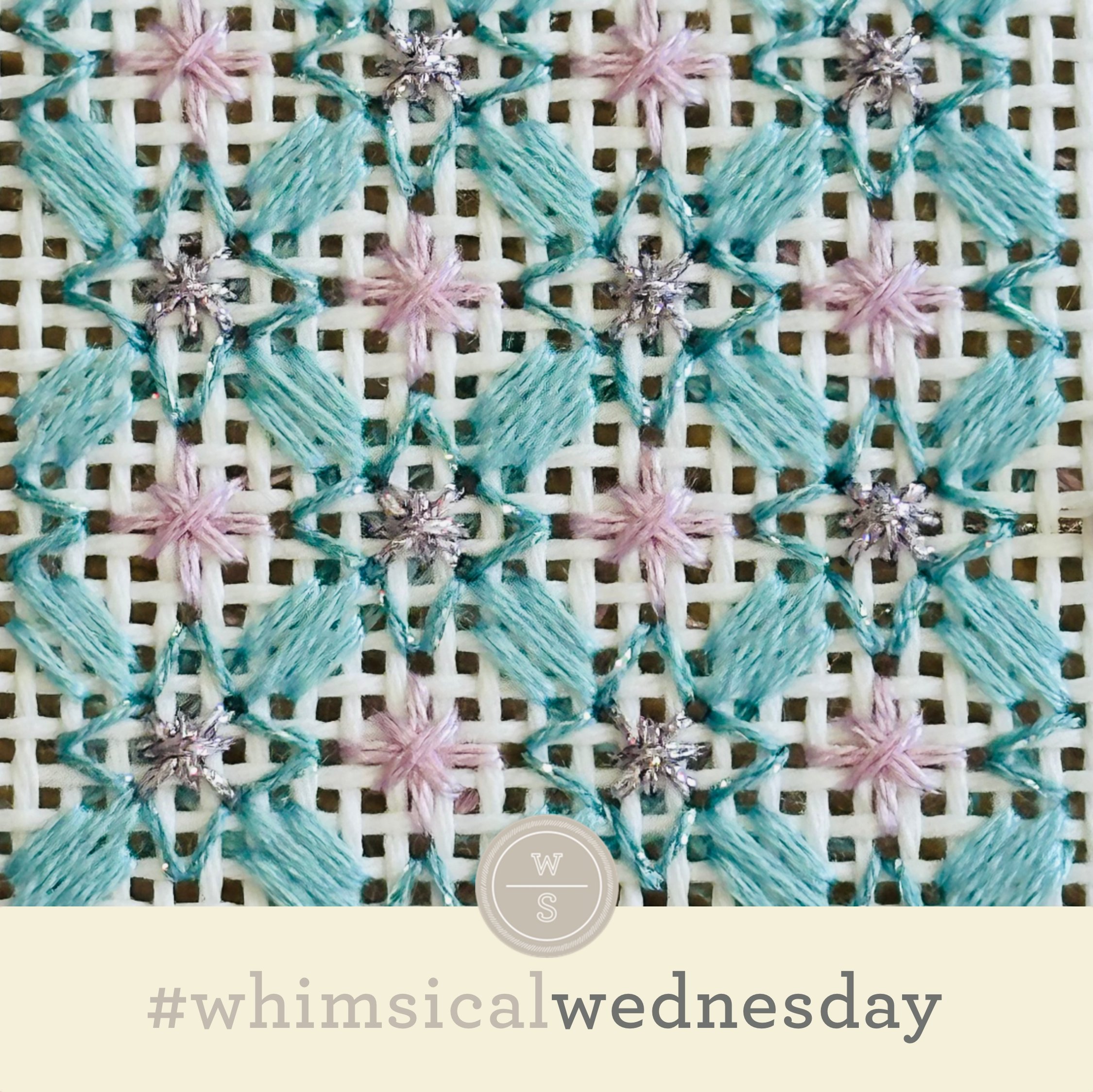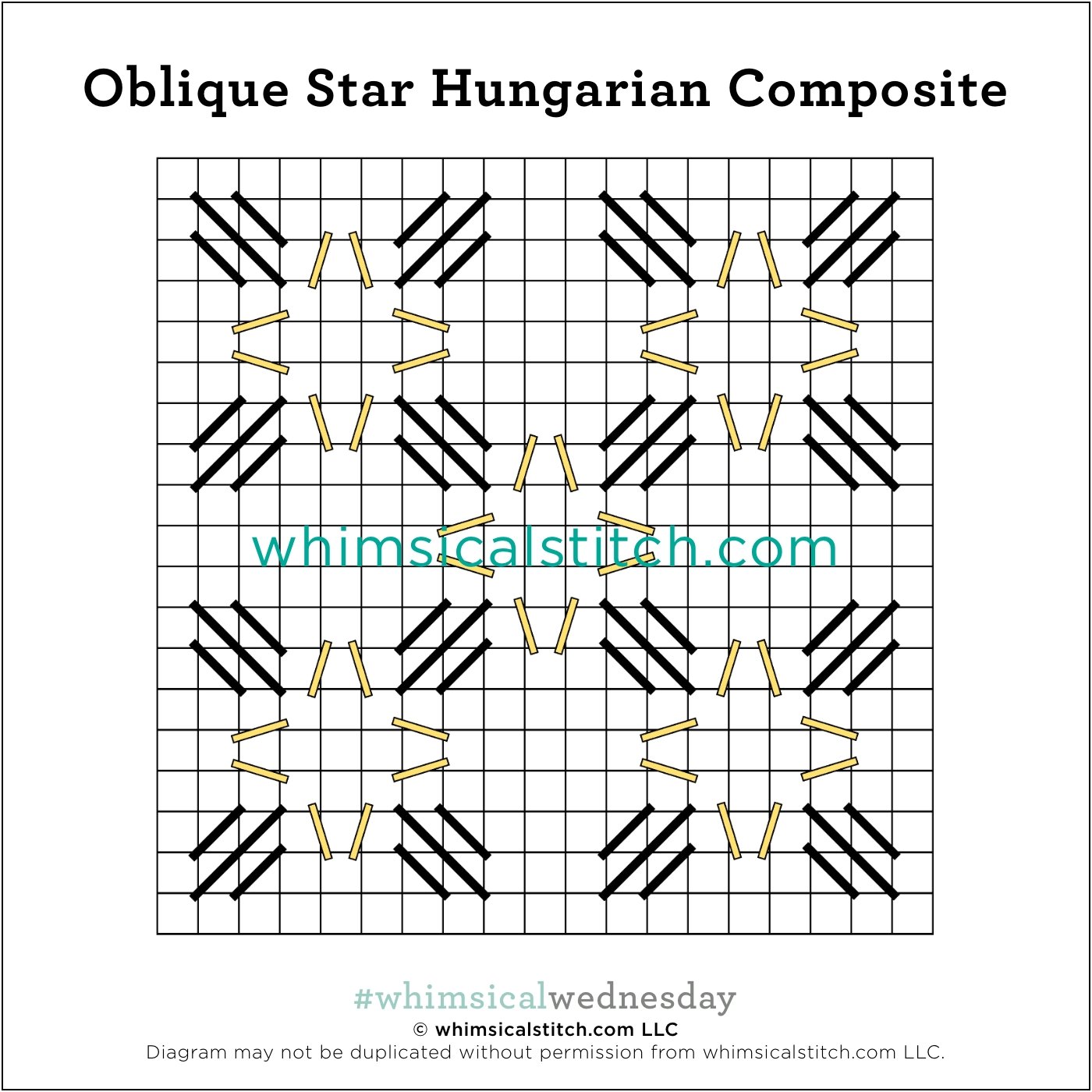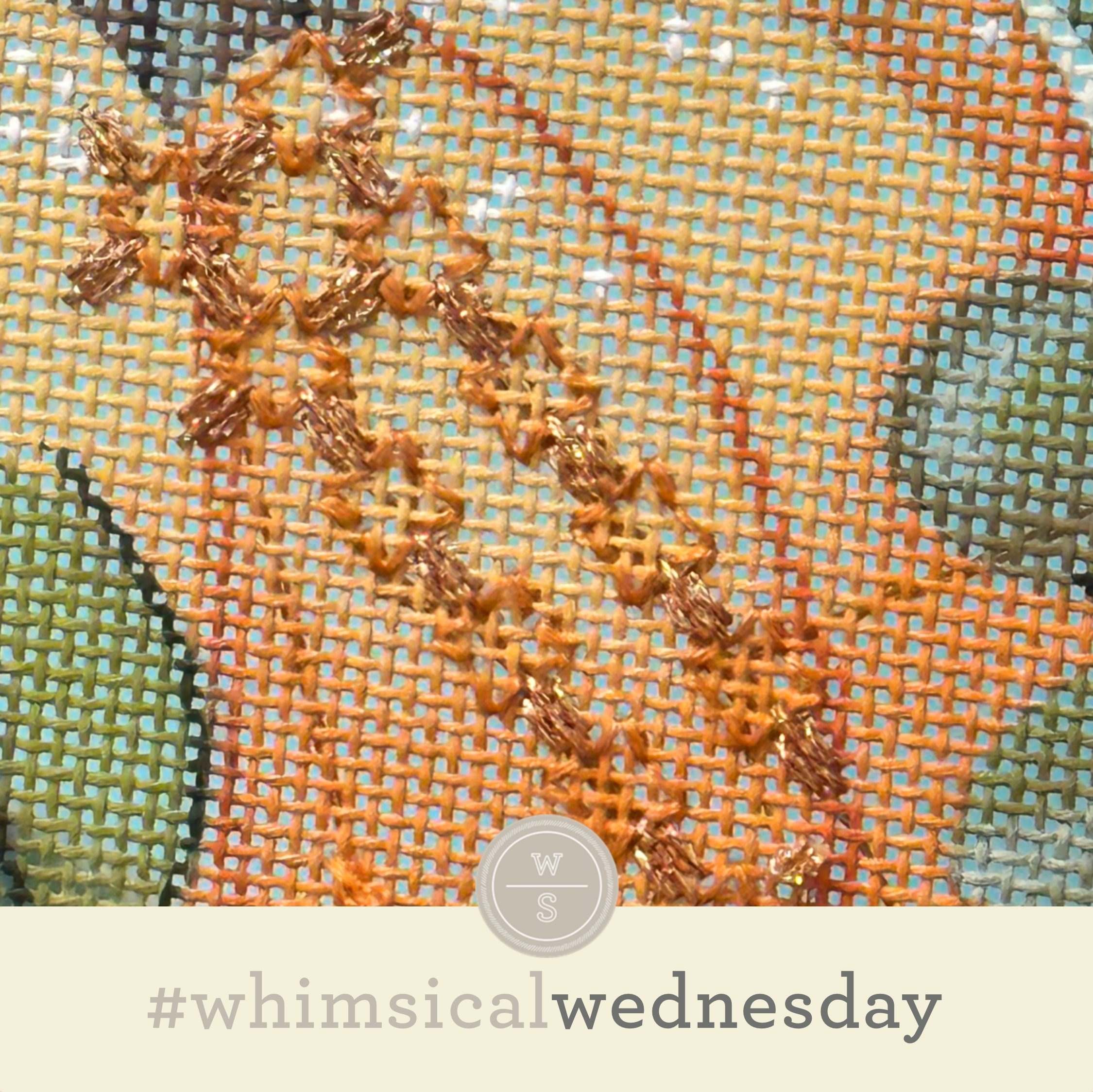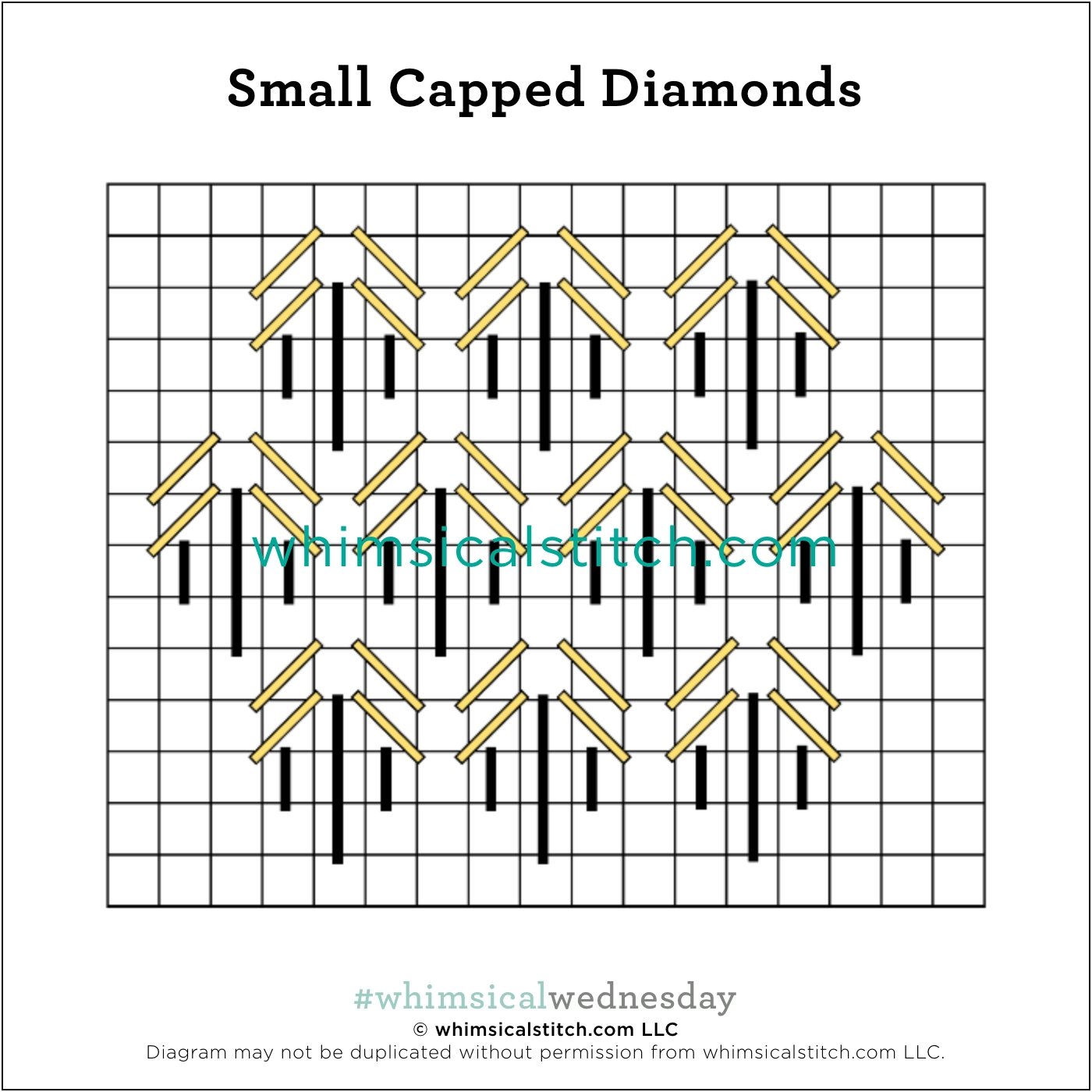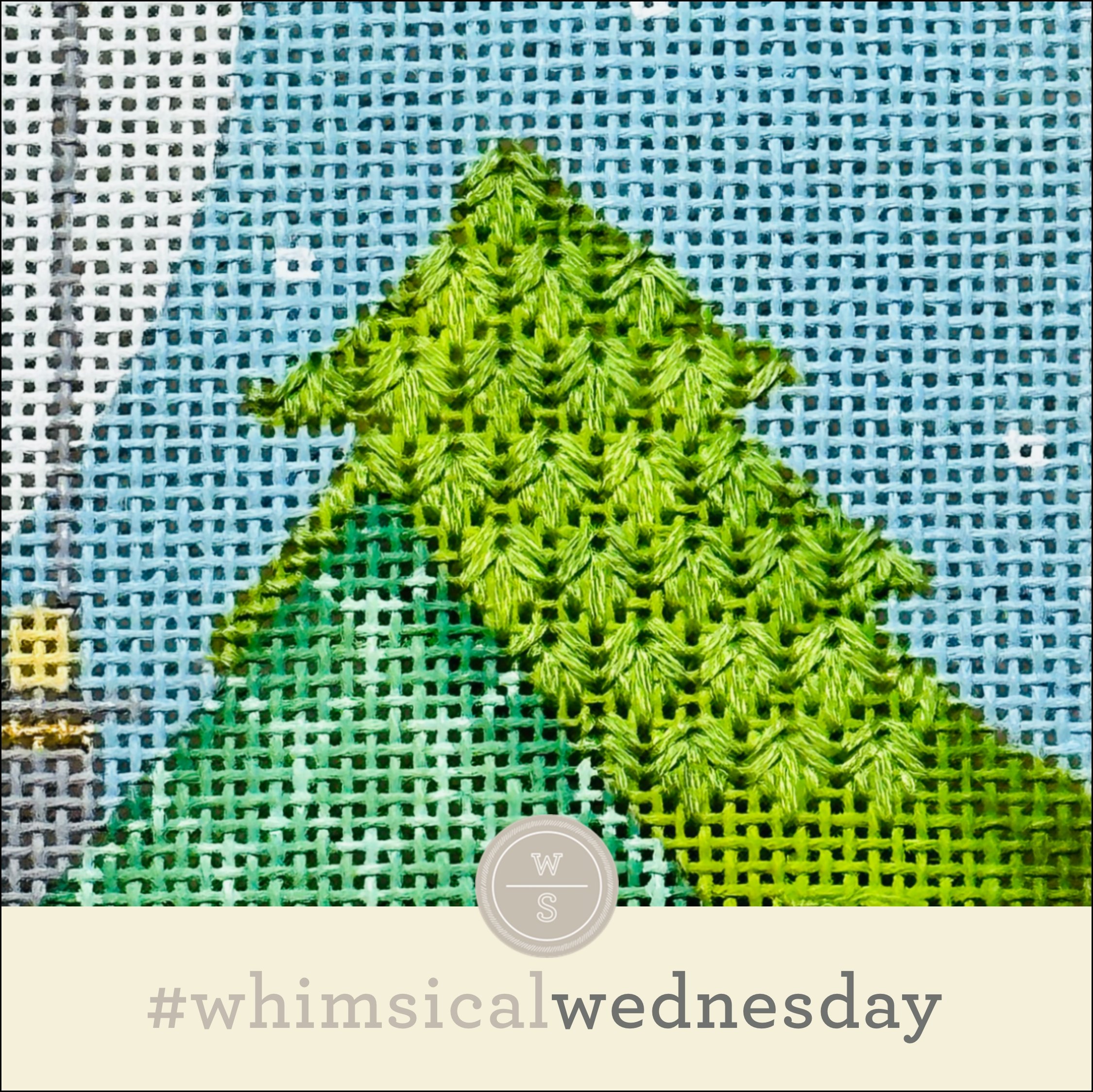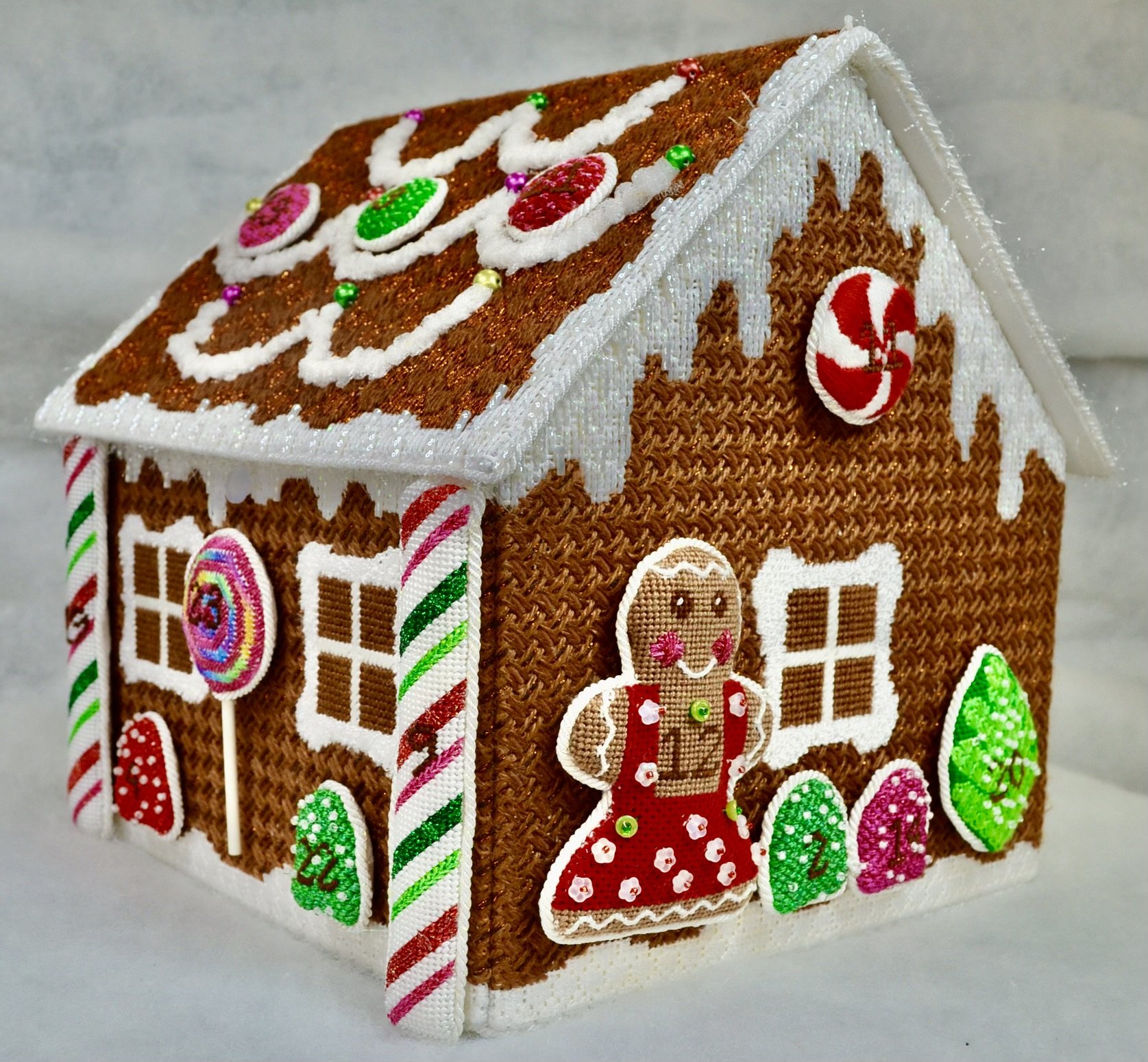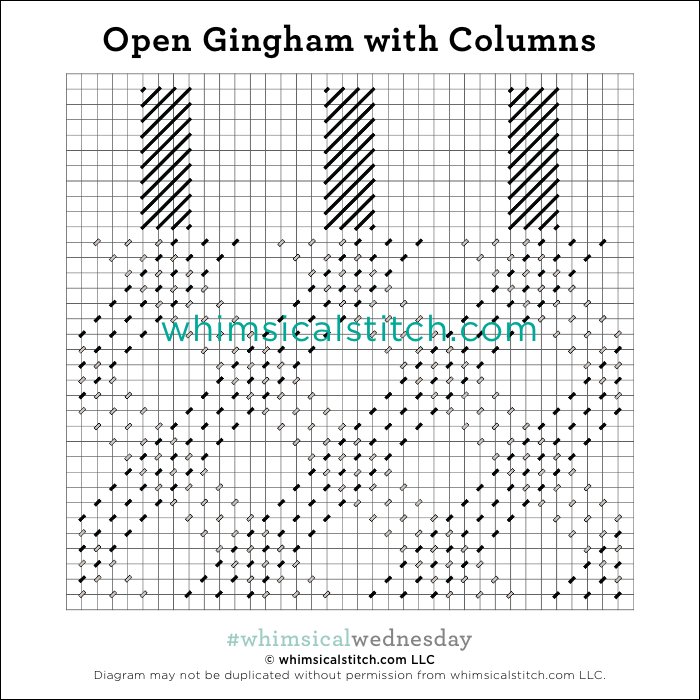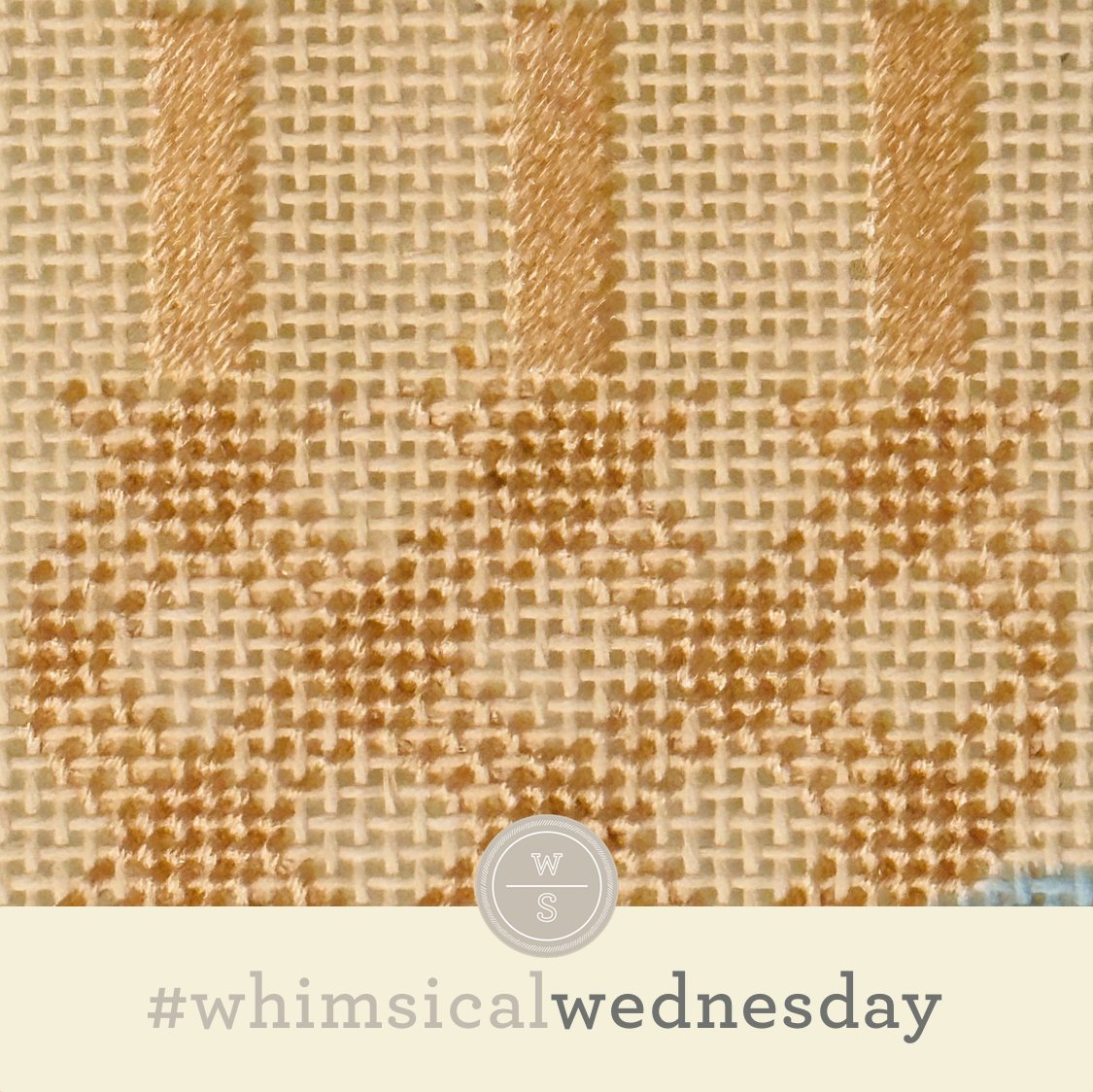Today’s stitch was inspired by what a stitching friend insisted was mistake. I love what emerged from this friendly disagreement.
The stitched sample is the background on a charming hydrangea canvas from Love MHB Studio. I absolutely did not need this canvas but had to have it, so I bought it while I was at Emily’s Stitchery a couple of weekends ago. (That run-on thought is due to my guilty but happy subconscious.) It all ended with a new stitch, which makes it all okay, right? I used three plies of peach Soie Cristale for the black lines and two strands of peach Petite Silk Lame for the aqua lines.
I’m looking forward to using this for a small roof, with Vineyard Silk for the black lines and Glisten for the aqua lines. I'm also planning to use it for a small sweater, with Silk Lame for the black lines and, as a little twist, Bella Lusso wool for the aqua lines.
Consider dressing it up with a single bead over two rows in the center of each diamond (in lieu of the straight stitch) for water with a Kreinik metallic for the black lines and a Sundance Bead. If you want a little more coverage, replace the straight stitch with an upright cross.
I hope you have the perfect spot for today’s small space stitch. Have fun playing with it!
As you are auditioning stitches (from any stitch source), count the number of canvas threads on the diagram that match your mesh size. And there you have what an inch of the stitch will look like. Evaluate that against the area where you plan to use the stitch and make your final decision. If you start integrating this step into your stitch selection process, you may be surprised at how many stitches you think are large are much smaller than you realize.
By (sometimes) including this step in my own process, I find I am now integrating much longer stitches than I ever thought I would. I used to think a stitch six rows long was super big. I have very much changed my tune, which has helped me expand my creativity, especially for large-space stitches.
Today’s stitch diagram, along with all other #whimsicalwednesday and #smallspacesunday stitch diagrams, can also be found on a Pinterest board here. Be sure to follow whimsicalstitch.com on Facebook, Pinterest, Instagram, and Twitter.
If you like what you see on this blog, there's more. Mary’s Whimsical Stitches is a series of four books offering contemporary how-to collections of more than 200 stitches (in each volume) for all stitchers, regardless of skill level. All books include updated and sequenced diagrams from this blog, plus a collection of all-new stitches from private lessons and other class projects. Visit here to find a needlepoint retailer that carries my books.
New to needlepoint or looking for a refresher? Please download a handy how-to guide covering basic needlepoint stitches and stitch compensation techniques along with new top-line information on needlepoint materials and tools, how to handle threads, and other helpful needlepoint resources.
whimsicalstitch.com also sells Stitch Guides and Stitch Concepts for Melissa Shirley Designs, Zecca Designs, Sandra Gilmore, Purple Palm, Maggie, and Penny MacLeod, and many more. Click here to see the newest guides and click here to see the entire collection.
I hope you have the perfect spot for this stitch! Please enjoy! Have a wonderful #whimsicalwednesday!
A Note about Diagrams
I use color in diagrams to make them as clear as possible. The primary function of different colored lines is to illustrate a stitch sequence. For example, the layering of colors demonstrates you add them in that order. They can also provide ideas on integrating additional threads (one line for each color). Or, you can use the same thread for all color lines. That's where I encourage you to use your imagination for the space you are stitching!





